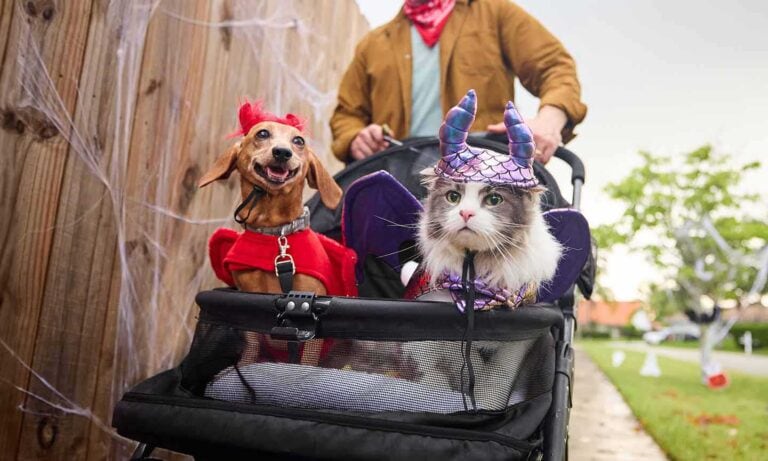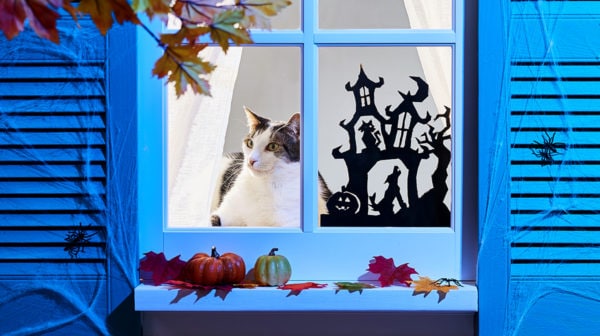Seven days a week, 72 year-old Millie Schafer gets into her black Chevy pickup truck and drives through the streets of Cincinnati, Ohio. Her mission? To take care of feral cats.
Sometimes she traps them in a special cage so she can take them to a veterinarian to be neutered, then returns them to the part of the city she found them in after they’ve recovered from surgery. It’s a practice known as TNR (trap-neuter-return). Unlike other TNR organizations, after the cats are returned, Schafer continues to feed and care for them or enlists a resident to do so, furnishing them with cat food since they can rarely afford to spend their own money to feed a colony of cats day after day and year after year.
Schafer is retired, but not really. When it comes to helping the neighborhood cats, she says, “I routinely work fifty-plus hours a week.”
Schafer really isn’t a crazy cat lady as the stereotype goes, but she is crazy for cats.
Schafer is also part of a movement. TNR has its critics, with some seeing it as cruel to bring cats in from the streets only to release them into the wild again, and others find it unappealing since feral cats can potentially reduce local bird populations and create neighborhoods that look like a giant litter box. Still, a number of shelters, organizations and veterinarians support the practice, which has been gaining popularity since the 1990s. Proponents of TNR say that it’s really the only realistic way the country will ever humanely reduce its cat population (the Humane Society estimates that there are 50 million feral cats in the United States).
A TNR Organization is Born
Schafer used to be a federal government research scientist, but she has been rescuing cats for some time now, beginning by helping her late mother who was overwhelmed with all the cats living in her barn. Soon after moving to Cincinnati from Bethesda, Maryland in 1990, Schafer noticed all the cats wandering around the city. By 2004, she was serious enough about helping them that she ended up starting a nonprofit, Neighborhood Cat Helpers.
She has about ten active volunteers who do everything from trapping cats to take them to the vet to the much less glamorous work, like disinfecting cat traps and cat carriers. Over the years, Schafer estimates that Neighborhood Cat Helpers has helped 3,000 cats and kittens. Currently, her group is maintaining and monitoring about 40 different cat colonies.
“All animals directly in our care not only get fixed and vaccinated. They receive top-notch personal care,” Schafer says.
The nonprofit receives about $10,000 to $15,000 a year in donations that help with food and veterinary procedures, but Schafer added that she’s learned to do most of her work on a shoestring budget. She says that at least one organization told her that they could only give her more money if her nonprofit brought in more donations, but that she’d rather spend her time working in the field than fundraising.
Risking Her Safety to Save Cats
On a quiet tree-lined street with paint-chipped homes that have seen better days, Schafer gets out of her Chevy with a bag of cat food and a jug of water and points out the favorite hangouts of prostitutes as well as homes of some drug dealers and murder victims in this Walnut Hills neighborhood. The first time she ever came into this area, Schafer says a group of young men blocked her car on a Sunday morning, telling her, “we’re evaluating whether to rob you or not.” Fortunately they didn’t, and ever since, Schafer has made a point of wearing her Neighborhood Cat Helpers T-shirt in the hopes of letting would-be muggers know that her intentions are good. She has also spread the word about her work among residents in the area—many of whom also happen to be cat lovers, she says.
On this day, the streets are mostly quiet, but behind some deserted homes half a dozen or so cats perk up when they see Schafer coming. She calls to them but doesn’t really need to, as they’re keenly interested in the food and water she has brought them.
A Nation-Wide Mission
Schafer may be devoted to her cats, but she is hardly the only feral cat advocate in the world. There are over 260 registered nonprofit cat protection organizations nationwide, according to Alley Cat Allies, a national advocacy organization dedicated to the protection and humane treatment of cats.
Barb Wehmann, a retired school psychologist and the president of SCOOP, a Cincinnati-based nonprofit that offers TNR advice to local organizations and has a program for sick and injured cats, has worked with and known Schafer for years and says meets feral cat lovers in all walks of life.
“We’ve met teachers, lawyers, construction workers – who all care about cats,” Wehmann says. “We met men who worked at a furniture store who stopped everything they were doing when a 10-day-old kitten fell off of the cardboard crusher truck. The kittens’ family was killed, but these men saved that kitten and got it the help it needed.”
Building a Team of Volunteers
While helping a kitten is one thing, helping an entire cat colony is quite another and it can lead to burnout. Schafer says she’s seen feral cat groups start with good intentions and wind up sputtering out, while Wehmann says she has seen her share of volunteers fade away.
“People need to know their own limitations—physical, time, finances—and not overwhelm themselves,” Wehmann says. “A feral colony of, for example, 25 cats doesn’t happen overnight, and it can’t be helped overnight unless a huge team of people do a mass trapping.”
That Schafer hasn’t burned out may be because she started off slowly and, thanks to her volunteers, isn’t alone. Upon returning from Walnut Hills’ colony feedings, she encounters Lynn Walden, a court reporter from Cincinnati who has been volunteering for Neighborhood Cat Helpers since 2006. Once a week for about four hours, Walden cleans a room in Schafer’s house that has been dubbed, “the foster room.” Today, Walden will also help the kittens learn to socialize. It can be hard not to want to adopt them all, and Walden admits she has taken a few home. “I have seven cats,” she says.
Another volunteer, Liz Spear, a real estate agent in Lebanon, Ohio, has 14 cats. She says you’d never know if you visited her home. The litter boxes are all automatic, and there’s nary the scent of cats. Spear has been working with Schafer for the last six years.
It’s a lot of time and effort, but Schafer isn’t one to complain. She simply wants to see cats treated well, and knows that stray cats can be subject to coyotes, parasites, bad weather and people who don’t always have the best intensions. But it isn’t all bad, Schafer says. She knows of some free-roaming cats that have lived to be over 20 years old, and the colony cats she cares for don’t have some of the issues indoor cats have, like obesity or dental problems. And as she recruits more people to help out, ultimately some cats from colonies are adopted.
This is always a welcome outcome, Spear says. She especially enjoys seeing a kitten that the group has fostered being considered by adoptive pet parents.
“When you see an adult or child pick up that kitten and you see them holding and talking to it, it’s a terrific feeling, just knowing that it’s going to have this wonderful, spoiled kind of life,” she says.
Image: Neighborhood Cat Helpers

Geoff Williams is a freelance journalist in Loveland, Ohio. He and his two daughters live with one dog, three cats, two guinea pigs, one rat and a lot of fish.
Share:









